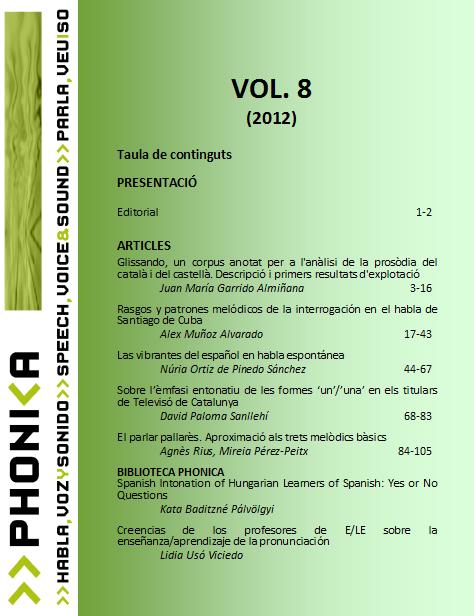Spanish Intonation of Hungarian Learners of Spanish: Yes or No Questions
Keywords:
intonation, interlanguage, melodic analysis of speech, yes-no questionsAbstract
The present dissertation is a comparative study of the intonation of yes-no questions in Hungarian and Spanish. Based especially on my own corpora, I examine the realization of the main accent in utterances, pitch range, and the intonational patterns applied. First, these aspects will be investigated in a Spanish corpus (Corpus 1) then in a Hungarian corpus (Corpus 2) and after that, I will make hypotheses about the ways Hungarians pronounce Spanish yes-no questions. These predictions then will be validated by means of a corpus containing Spanish yes-no questions produced by Hungarian learners of Spanish (Corpus 3).
My predictions were the following:
(a) As the place of main accent in an utterance depends on lexical stress, and lexical stress placement obeys different rules in the two languages, it is predictable that Hungarian learners of Spanish will not produce Spanish main accents according to the Spanish norms. (b) Hungarian uses a narrower pitch range than Spanish, thus, the Spanish yes-no interrogatives produced by Hungarian learners are expected to have a narrower pitch range. (c) The intonation contours applied will be investigated in 3 subgroups of yes-no questions: ordinary yes-no questions, echo yes-no questions and yes-no questions followed by a vocative. Ordinary yes-no questions in Hungarian are typically accompanied by rising-falling contours, whereas in Spanish, by rising ones; Hungarian echo yes-no questions have several main accents, each triggering a rise-fall contour, while in their Spanish counterparts there is one main accent in these cases, with a characteristically rising pattern. Yes-no question + vocative sequences contain two intonation units in both languages, but in Hungarian the yes-no interrogative conserves its rising-falling melody, and the vocative is accompanied by a fall, unlike in Spanish, where both contours are rising, and the final vocative is given the higher rise. Based on these observations, the prediction is that Hungarians will transfer their Hungarian intonational patterns to Spanish yes-no questions, which may be found unacceptable by Spanish listeners.
My hypotheses will be validated by the analysis of the Spanish yes-no interrogatives of Hungarian students, which will cast light on those areas of intonation which should be given more attention in Spanish language teaching in Hungary.Downloads
Issue
Section
License
The author(s) publishing in this journal agree to the following terms:
- The author(s) retains the copyright and grants the journal the right to the first publication of the work.
- All contents included in PHONICA are subject to the Creative Commons Attribution 4.0 International License, which allows the work to be shared with third parties, provided that they acknowledge its authorship, initial publication in this journal and the terms of the license.



